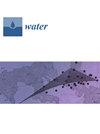Characterization of Wastewater in an Activated Sludge Treatment Plant of the Food Sector
IF 3
3区 环境科学与生态学
Q2 ENVIRONMENTAL SCIENCES
引用次数: 0
Abstract
Recently, water has become a resource that generates controversy due to shortage alarms and high consumption by production companies. Making good use of water has become the main objective of government institutions. The food industry generates a large amount of wastewater, concentrating the largest number of contaminants originated in its processes. Wastewater from the food industry is characterized by having a large amount of organic matter, especially fats and oils, as well as suspended solids. The objective of this research is to carry out a characterization of effluents generated in a wastewater treatment plant in the food sector based on Mexican and international regulations to determine whether it is reusable. This article addresses Mexico’s lag in the reuse of treated wastewater in the face of the water crisis, highlighting the urgency of adopting these practices to mitigate water scarcity. For the development of this investigation, samples were collected at the discharge point produced by the company’s effluents, followed by an evaluation of their physical, chemical, and biological parameters, and finally, it was determined that the effluent follows the regulatory standards for discharge into the city sewer but outside the range for reuse in productive processes or irrigation of green areas.食品行业活性污泥处理厂废水的特征描述
近来,由于水资源短缺警报和生产企业的高消耗,水资源已成为一种引发争议的资源。充分利用水资源已成为政府机构的主要目标。食品工业产生大量废水,集中了其生产过程中产生的最多污染物。食品工业废水的特点是含有大量有机物,尤其是油脂和悬浮固体。本研究的目的是根据墨西哥和国际法规,对食品行业废水处理厂产生的废水进行特性分析,以确定其是否可再利用。本文探讨了墨西哥在面临水危机的情况下在废水处理再利用方面的滞后问题,强调了采用这些做法缓解水资源短缺问题的紧迫性。为了开展这项调查,在该公司污水排放点采集了样本,随后对其物理、化学和生物参数进行了评估,最后确定污水符合排入城市下水道的监管标准,但不在生产工艺或绿地灌溉再利用的范围内。
本文章由计算机程序翻译,如有差异,请以英文原文为准。
求助全文
约1分钟内获得全文
求助全文
来源期刊

Water
WATER RESOURCES-
CiteScore
5.80
自引率
14.70%
发文量
3491
审稿时长
19.85 days
期刊介绍:
Water (ISSN 2073-4441) is an international and cross-disciplinary scholarly journal covering all aspects of water including water science and technology, and the hydrology, ecology and management of water resources. It publishes regular research papers, critical reviews and short communications, and there is no restriction on the length of the papers. Our aim is to encourage scientists to publish their experimental and theoretical research in as much detail as possible. Full experimental and/or methodical details must be provided for research articles. Computed data or files regarding the full details of the experimental procedure, if unable to be published in a normal way, can be deposited as supplementary material.
 求助内容:
求助内容: 应助结果提醒方式:
应助结果提醒方式:


